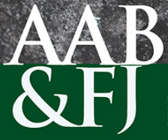Abstract
A report submitted to Victoria’s Minister for Environment, Climate Change & Water in 2015 identified that the mechanisms in place for governance of Melbourne’s Lower Yarra River inhibit the river’s potential to enhance the liveability of the City of Melbourne. An absence of shared strategy and coordinated management across multiple government agencies was highlighted. Recommendations were made for revised governance arrangements, but they have been largely disregarded. Scholarship of the structure and function of river governance networks is at an early stage, but this study applies theory from a related field – collaborative governance – to investigate the implications of this lost opportunity for enhanced collaboration. The study explores the opportunity to apply an integrated framework for collaborative governance developed by Emerson, Nabatchi & Balogh, and its constituent elements, to an urban river governance context. The integrated framework is shown to be a valuable tool for illuminating the drivers, engagement processes, motivational attributes and joint capacities that can enable shared decision-making and implementation across multiple organisations and jurisdictions, to achieve desired ends. The study identifies the need to effectively manage political, legal, socioeconomic and environmental influences (the system context), along with the constraints of collaboration dynamics, if a collaborative governance regime is to be successfully implemented. The study identifies that factors such as interdependence, leadership direction, consequential incentives and uncertainty play a key role in driving collaboration dynamics, in the context of an urban river corridor. A collaborative multi-regulator partnership approach is advocated as the immediate way forward for the Lower Yarra.
Keywords: Governance, collaboration, partnership, urban river corridors
How to Cite:
Goodwin, D., (2022) “Melbourne’s Birrarung: the Missed Opportunity for Collaborative Urban River Governance”, Australasian Accounting, Business and Finance Journal 16(2), 32-52. doi: https://doi.org/10.14453/aabfj.v16i2.4
Downloads:
Download PDF
667 Views
785 Downloads

